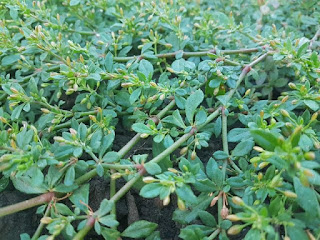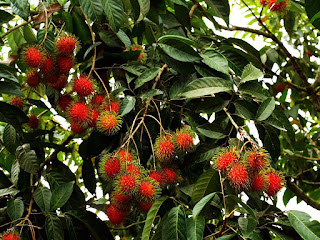WATERLEAF PLANT
(Talinum Paniculatum)
HEALTH BENEFITS
Cough
diarrhea
liver problem
kidney problem
gastrointestinal disorders
skin inflammation, minor scratches, cuts, and scrapes
arthritis
stomach inflammation
pneumonia
Lower blood sugar level
PROPERTIES
Antinociceptive
Anti-edematogenic
Phytoremediative
Anti-fertility
Estrogenic
Tocolytic
Anti-aging
Antioxidative
Antiscorbutic
Anti-inflammatory
Waterleaf is a fleshy, erect herb, growing up to 100 to 120 centimeters tall. Roots are swollen and fleshy. Stems are succulent, slightly woody at the base. Leaves are in whorls, obovate-lanceolate, flat, glossy and bright green. Flowers are in terminal panicles, small and pink colored. Fruit is a globose, glossy, dark red capsule, 3 to 5 millimeters in diameter, many-seeded.
- Young leaves and stems are used as vegetable.
- Leaves used as salad ingredient.
- Shoots and leaves added to stews and soup.
- In some parts of Asia, used as a spice.
- In Asian traditional medicine, use extensively as a reproductive tonic.
- Roots used as substitute for ginseng.
- Used to regulate menses; also, for cough, general debility, diarrhea.
- In China, it is cultivated as a medicinal herb. In traditional Chinese medicine, the herb is used as a substitute for Ginseng.
- In Indonesia, used for liver and kidney problems.
- In Brazil, plant used to treat inflammatory conditions.
- Used to treat bad smelling urine, enuresis, irregular menses, gastrointestinal disorders, general debility. Leaves used topically in the treatment of edemas, skin inflammation, minor scratches, cuts, and scrapes. Decoction of roots used to treat scurvy, arthritis, stomach inflammation, and pneumonia.
- Popular in Thai herbal recipes for enhancing vitality, treating diabetes, inflammatory skin problems, GI troubles, and general weakness. Used to induce lactation and restore uterine functions postpartum.
- Swollen root used as aphrodisiac.




































